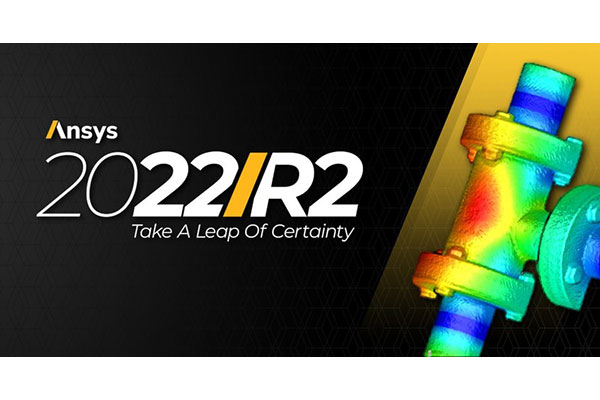
As simulations become larger and more complex, Ansys 2022 R2 empowers users to run large jobs and overcome hardware capacity limitations with HPC. Image courtesy of Ansys.
Latest News
July 29, 2022
Ansys 2022 R2 provides an analysis, artificial intelligence/machine learning (AI/ML) optimization, and scalable platform for tough engineering challenges.
Insight-Driven Innovation
Ansys 2022 R2 provides insights for multiple industries to meet their goals. For example, Ansys Granta products help engineers factor in material sustainability earlier in the design process. By displaying the latest sustainability data in simulation and computer-aided design (CAD) tools, engineers from multiple industries can gain perspective on material choices as part of their ecodesign strategies.
New features in Ansys Speos optical simulation software help automatically create the back face of a lens. This helps automotive lighting designers create lenses that achieve specific beam patterns, which also helps the general lighting industry create custom light patterns and control light pollution.
Model-based simulation and digital twins are helping leading organizations transform to embrace streamlined, insight-driven business models. For instance, Ansys Maxwell 2022 R2 electromechanical device analysis software provides reduced-order models (ROMs) for induction machines with improved predictive accuracy, which can be used in Ansys Twin Builder for electric vehicle drive system simulations.
Scalable, Open Workflows
Ansys 2022 R2 delivers technical innovations that connect physics and disciplines across scales. For example, Ansys LS-DYNA is used in automotive crash, electronics drop tests, airbag deployment and impact analysis. The new release includes a multi-scale co-simulation capability engineers use to predict solder ball fatigue failure in a printed circuit board (PCB) within a macro-scale drop test.
Platform-Powered Performance
As simulations become larger and more complex, Ansys 2022 R2 empowers users to run large jobs and overcome hardware capacity limitations with HPC and enhanced solver algorithms that use graphic processor units (GPUs).
In Ansys 2022 R2, the Fluids product line continues to make computational fluids dynamics (CFD) simulations more sustainable.
The Speos optical solver takes advantage of multi-GPU, multi-node deployments. The new capability in Speos enables users to increase the number of rays to boost simulation predictive accuracy.
Sources: Press materials received from the company and additional information gleaned from the company’s website.
More Ansys Coverage
Subscribe to our FREE magazine, FREE email newsletters or both!
Latest News
About the Author
DE’s editors contribute news and new product announcements to Digital Engineering.
Press releases may be sent to them via [email protected].






